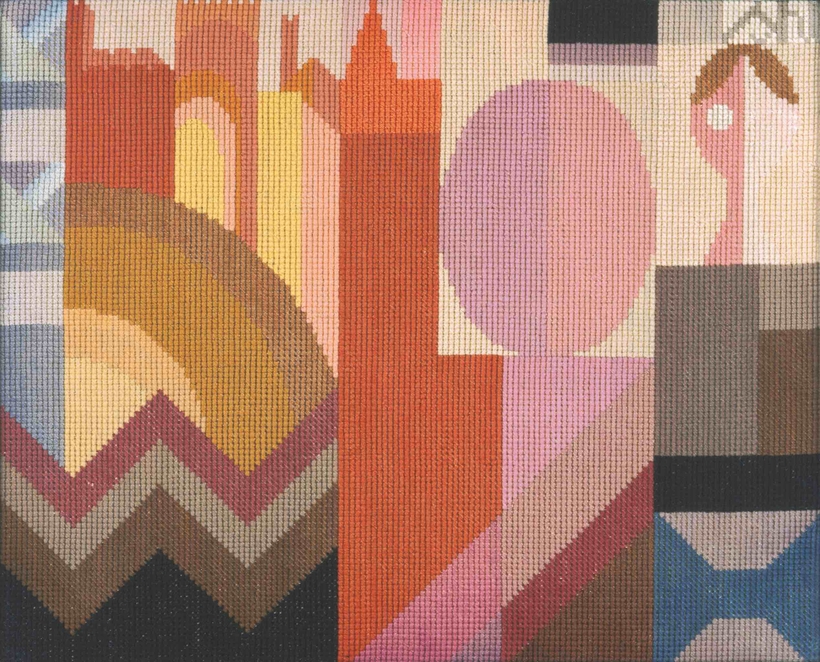Extraordinarily innovative and diverse, Sophie Taeuber-Arp figured prominently among the Zurich avant-garde, a swirl of Dadaists, Constructivists, and abstractionists. She pirouetted from paintings to sculpture, to textiles, to stained-glass windows, to marionettes, to design in many spheres (stage, costume, graphics, interiors, architecture). Her geometries and colors pulsate in paintings and wood bas-relief tondi. And her exquisite embroideries, beadwork, furniture, and tapestries propelled the British Arts and Crafts Movement into the 20th century. This endless energy and dizzying range come together in the exhibition “Sophie Taeuber-Arp: Living Abstraction,” which opens next week at London’s Tate Modern.
Born in Davos, Switzerland, in 1889, Taeuber-Arp studied textile design in her late teens and applied art in her 20s, while also gaining recognition as a dancer and choreographer. Indeed, a sense of kinetics would be vivid throughout all the mediums in which she worked, creating an inimitable style alive with playfulness, movement, rhythm. Sadly, in 1943, after having fled Nazi-occupied France for Switzerland, Taeuber-Arp died of accidental carbon-monoxide poisoning. In her native land she is celebrated—from 1995 to 2016, Taeuber-Arp’s face graced the Swiss 50-franc note. Outside that country, she is less known.

And she is habitually outshone by equally pioneering male contemporaries, including her husband, the French-German sculptor Hans (Jean) Arp, whom she met in 1915 and married in 1922. Routinely, Taeuber-Arp is represented in exhibitions only by her work in three dimensions.
Sometimes it’s the carved-wood “Heads.” One of them, from 1937 and unpainted, suggests a grinning child as well as a teardrop, a breast, and a bird’s yawning bill—it’s a poetic conflation that continually evolves. Other times, it’s the polychromed, lathe-turned wood marionettes—magical creatures adorned with flowers, feathers, and jewelry—that Taeuber-Arp designed in 1918 for a satirical, Freudian parody of Carlo Gozzi’s commedia dell’arte play King Stag.

Like all of Taeuber-Arp’s puppets, the eponymous character King Stag is comical yet tender—more animated-sculpture than marionette. He immediately feels familiar, pulling on your heartstrings as a kind of brother to the Tin Man in Oz. But once seen, the refined artistry of Taeuber-Arp’s gleaming, golden Monarch forever relegates his tin cousin to mere common stock.
Taeuber-Arp’s puppets are justifiably and widely fêted. In 2015, her King Stag creations inspired Karl Lagerfeld’s fall-winter Fendi collection, and its ad campaign saw models posing with the puppets. A chronological retrospective of some 400 works—including the Dadist “Heads” and the stars of King Stag—“Sophie Taeuber-Arp: Living Abstraction” fittingly originated at the Kunstmuseum, Basel. After its three months at the Tate Modern, it heads to New York’s Museum of Modern Art for a November 21 opening. Illuminating the complete artist, the exhibition rightly establishes that Taeuber-Arp is a master of much more than marionettes. —Lance Esplund


 Discover
Discover